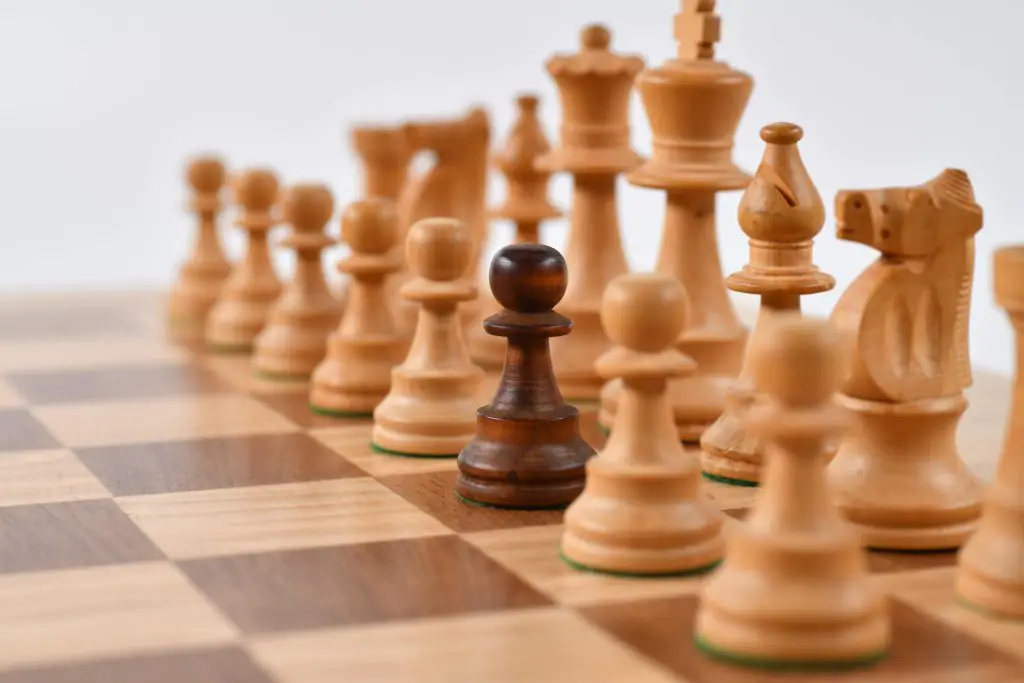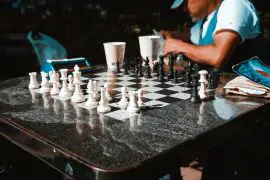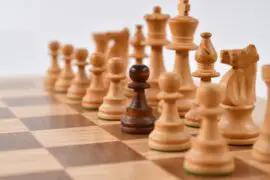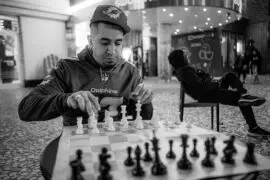Chess, a timeless game of strategy and intellect, has a unique tradition that sets it apart from other competitive activities: the practice of chess notation. In every chess game, players meticulously record their moves using a standardized notation system. This practice holds immense significance in the chess community, with its widespread use observed in games at all levels, from casual matches to high-stakes tournaments. In this article, we aim to Why do chess players write down their moves. By understanding the rationale behind chess notation, we can gain deeper insights into the game and appreciate the value it brings to players and the chess community.
Historical Context
Contents
The practice of recording chess moves can be traced back to the game’s early days, showcasing a rich historical lineage. The origins of chess notation can be found in the ancient Indian game of Chaturanga, which eventually evolved into modern chess. In its earliest forms, players would orally announce their moves, relying on memory to recall the sequence of play.
As chess spread across different cultures and regions, the need for a more formal and standardized notation system emerged. In the 15th century, the Italian and Spanish chess schools introduced rudimentary notations, using abbreviations and symbols to represent the movement of pieces. However, these early systems lacked consistency and were limited in their effectiveness.

The 19th century witnessed a significant leap forward in the evolution of chess notation. The Englishman Howard Staunton, a prominent chess player and writer, played a pivotal role in developing a standardized notation system. His efforts resulted in adoption of algebraic notation, which is still widely used today.
Algebraic notation assigns a letter and number combination to each square on the chessboard, making it easier to represent moves and positions. It enables precise and unambiguous recording of moves, allowing players to communicate their games effectively and facilitating the analysis and study of chess.
Over time, the algebraic notation system has undergone refinements and enhancements, incorporating additional symbols and notational conventions. The modern standard, the Portable Game Notation (PGN), further extends the notation capabilities by including metadata, annotations, and game tags. PGN has become the preferred format for digitally sharing and storing chess games, enabling easy exchange and analysis among players worldwide.
The development and evolution of chess notation systems reflect the game’s growth and its practitioners’ desire for accuracy, consistency, and accessibility. By embracing standardized notation, chess has achieved a level of universality that allows players from different cultures and languages to communicate and study the game effectively.
Record-Keeping and Analysis
One of the primary benefits of writing down chess moves is preserving game history. By meticulously recording their moves, players create a valuable archive of their games, capturing the sequence of moves, the unfolding strategies, and the outcome. These records are a personal chess journal chronicling a player’s progress and experiences.
Game records are instrumental in future analysis and improvement. By revisiting recorded games, players can analyze their decisions, evaluate their thought processes, and identify areas for growth. The recorded moves serve as a roadmap to dissect the game, allowing players to pinpoint critical moments, tactical errors, missed opportunities, or brilliant moves. This retrospective analysis offers invaluable insights and fosters a deeper understanding of the game.
Examining recorded games also aids in identifying both strengths and weaknesses. Players can assess their performance objectively, recognizing patterns in their playstyle and strategic choices. By studying their recorded moves, players become aware of recurring mistakes, positional inaccuracies, or strategic vulnerabilities. These insights enable focused training and targeted improvement, allowing players to refine their skills and develop a more robust playing style.
Furthermore, recorded games are useful for individual players and for receiving feedback and analysis from others. Individuals can seek guidance and fresh perspectives by sharing their game records with chess coaches, mentors, or fellow players. Others can provide objective insights, strategic suggestions, and tactical analyses, helping players expand their knowledge and refine their approach to the game.
Rule Adherence and Dispute Resolution
Chess notation is crucial in ensuring compliance with the game’s rules. By meticulously recording moves, players adhere to the established standards of play and maintain a consistent framework for gameplay. Notation serves as a tangible representation of the game’s progression, allowing players to track and validate the legality of moves made by both sides.
In addition to rule adherence, recorded moves also serve as a valuable tool in resolving disputes that may arise during or after a game. Disagreements over move sequences, claims of illegal moves, or disputes regarding the current position can be effectively resolved by referring to the recorded notation. The notation provides an objective reference point, enabling players and arbiters to reconstruct the game accurately and ascertain the correct course of action.
Moreover, the practice of notation contributes to fairness and transparency in chess. By recording moves, players create a comprehensive and transparent game record. This record can be shared with spectators, commentators, and arbiters, ensuring that all interested parties can monitor and review the game’s progress. Notation enables observers to follow the game’s development, analyze strategic decisions, and engage in the excitement of the contest.
The use of notation in chess tournaments further enhances fairness and transparency. Tournament organizers and judges rely on recorded moves to ensure that games adhere to the rules and regulations of the event. Notation provides a standardized method of documenting games, allowing for accurate pairing, timely interventions in case of rule violations, and consistent enforcement of tournament guidelines. This fosters an environment of fairness, where all players can compete on an equal footing and trust in the integrity of the competition.
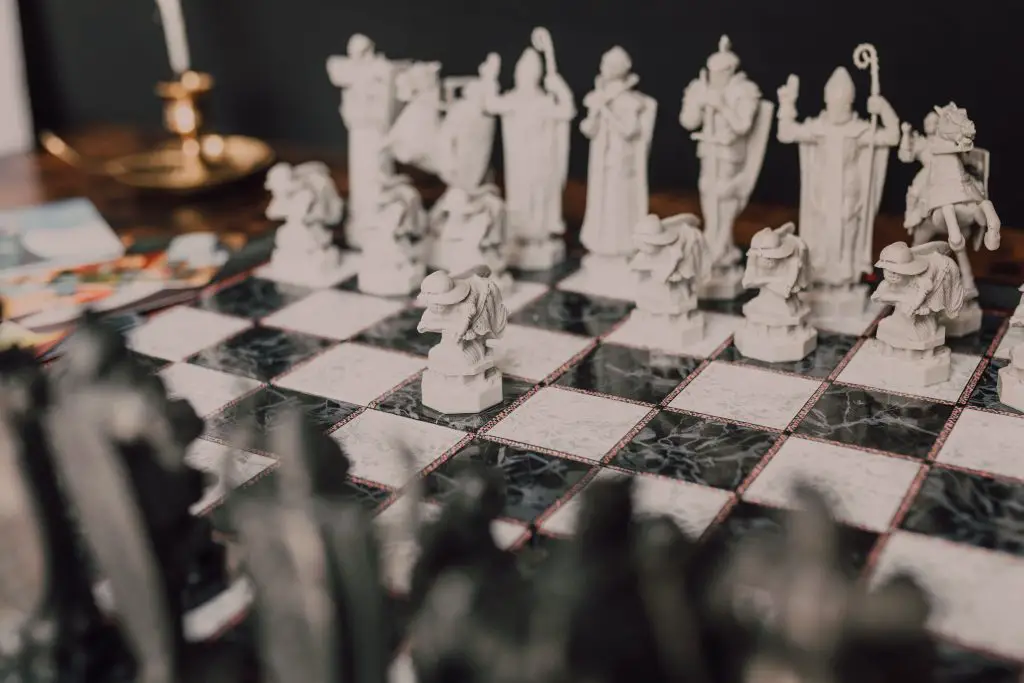
Learning and Study
Chess notation plays a pivotal role in facilitating the sharing and study of games, offering numerous benefits for players seeking to improve their skills and understanding of the game.
Firstly, chess notation allows players to share their recorded games with others easily. Notation provides a universal language that transcends linguistic barriers, whether it’s a fellow player, a coach, or an online chess community. Players can exchange their game records, enabling others to analyze and provide valuable feedback. Game-sharing fosters a collaborative learning environment where players benefit from different perspectives and insights.
Analyzing recorded games is essential to player improvement, and chess notation makes this process more accessible and effective. By carefully studying the recorded moves, players can analyze the strategies employed, evaluate tactical decisions, and identify areas for improvement. This critical analysis helps develop a deeper understanding of the game’s nuances, leading to enhanced strategic thinking, pattern recognition, and calculation abilities.
The notation also plays a central role in chess literature and educational resources. Chess books, magazines, and online tutorials extensively utilize notation to present games, demonstrate openings, illustrate tactical motifs, and convey strategic concepts. Players can study famous games played by chess legends, follow annotated variations, and immerse themselves in the rich literature of chess. Notation serves as a bridge between generations, allowing players to learn from the knowledge and experiences of those who have come before them.
Educational resources, such as chess databases and online platforms, utilize notation to provide interactive learning experiences. Players can engage with a vast collection of recorded games, filter by openings, search for specific positions, and analyze variations. These resources empower players to explore different strategies, learn from master games, and gain insights into the ever-evolving world of chess.
Calculation and Visualization
The practice of writing down moves in chess significantly aids players in both calculation and visualization, two essential skills for successful gameplay.
Firstly, writing down moves enables players to calculate variations more effectively. By recording the paper moves, players can visually analyze different sequences of moves and their potential consequences. The notation is a visual aid, allowing players to explore multiple play lines, evaluate different outcomes, and anticipate future positions. This process of calculating variations helps players make more informed decisions, assess risks, and devise effective strategies during the game.
The notation also enhances players’ ability to visualize the game. Chess notation visually represents the board state, allowing players to reconstruct and manipulate the position mentally. By referring to the recorded moves, players can better visualize the evolving dynamics of the game, understand the positional imbalances, and identify critical squares and piece relationships. This improved visualization enables players to anticipate future moves, evaluate positional advantages, and identify tactical opportunities.
Moreover, notation contributes to strategic planning and decision-making. By carefully recording moves, players can review their thought processes and the strategic choices made during the game. This retrospective analysis helps players identify their plans’ strengths and weaknesses, assess their decision-making effectiveness, and refine their strategic thinking for future games. The notation allows players to reflect on the game’s progression, understand the consequences of their moves, and adjust their strategies accordingly.
Tournament Requirements
In chess tournaments, the practice of recording moves is not merely a tradition but a mandatory requirement that ensures fairness, transparency, and the event’s smooth operation.
First and foremost, recording moves are typically a compulsory rule in chess tournaments. It is a fundamental requirement to verify and validate the game’s progress, ensuring that players adhere to the regulations and guidelines set by the tournament organizers. By recording moves, players demonstrate their commitment to following the established rules and contribute to maintaining a standardized playing environment.
Furthermore, notation is crucial in monitoring and broadcasting games during tournaments. Notation sheets allow judges, organizers, and spectators to follow the progress of multiple games simultaneously. It enables tournament officials to keep track of time control, ensure that games are proceeding correctly, and resolve any disputes or rule violations that may arise. Notation sheets provide a comprehensive record that helps maintain order and facilitates the smooth management of the tournament.
In addition, notation is essential for broadcasting games to a wider audience. Games are often broadcast live online or through other media platforms in high-level tournaments. Notation lets commentators and viewers follow the moves and analyze the games in real-time. It enhances the spectator experience, fosters engagement, and enables chess enthusiasts worldwide to witness and appreciate the intricacies of the tournament games.
Importantly, notation plays a vital role in ensuring tournament integrity. The recorded moves serve as an objective reference in case of disputes or claims of rule violations. Notation provides an accurate account of the game’s progression, enabling judges to resolve conflicts and make fair decisions based on documented moves. It serves as evidence to uphold the principles of fair play, maintain the tournament’s integrity, and protect the interests of all participants.
Why do chess players write down their moves?
In conclusion, writing down chess moves holds significant importance and serves multiple purposes in the game. Chess notation is not only a tradition but a practical and strategic practice that benefits players at all levels of play.
The main reasons chess players write down their moves can be summarized as follows: Firstly, move recording preserves the game’s history, allowing players to create a personal archive of their progress and experiences. Secondly, it facilitates analysis and improvement by providing a tangible record that players can study, reflect upon, and seek feedback from others. Thirdly, notation ensures compliance with the rules of chess, aids in dispute resolution, and maintains fairness and transparency.
The benefits of move recording in chess are multifaceted. It enables the sharing and studying of games, fostering a collaborative learning environment and providing access to a wealth of knowledge and experiences. Notation enhances calculation and visualization skills, allowing players to analyze variations and visualize the game’s dynamics more effectively. It also plays a vital role in strategic planning, decision-making, and self-improvement.
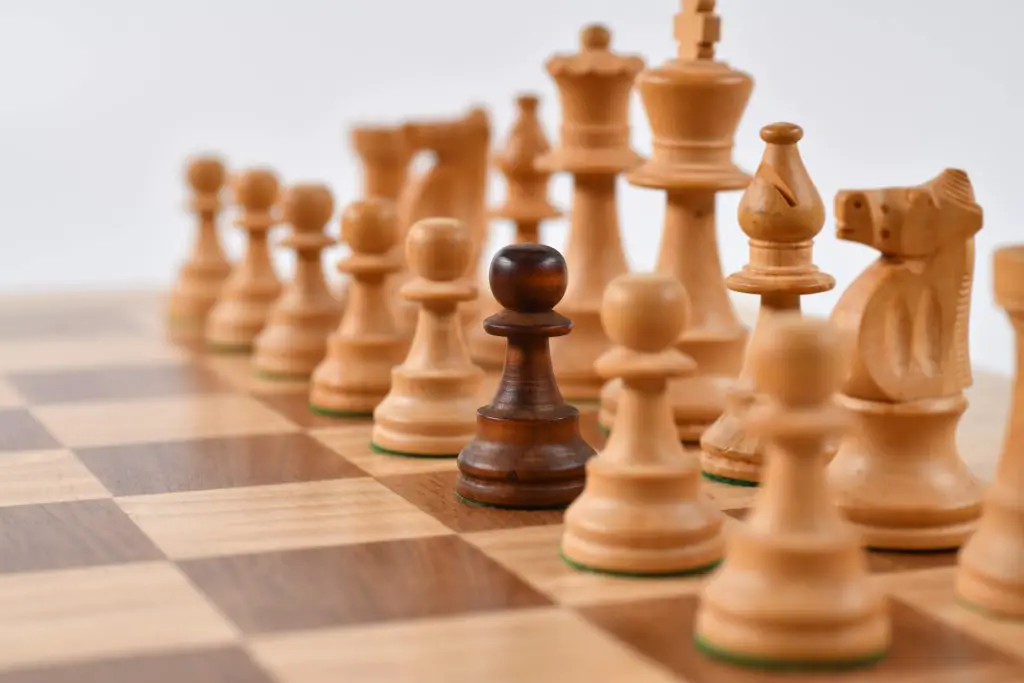
Chess notation stands as a cornerstone of the game’s rich tradition. It has evolved from rudimentary systems to the standardized algebraic notation used today. Notation preserves the legacy of chess, allowing players to connect with past generations and learn from the wisdom accumulated over centuries. It ensures consistency, fairness, and integrity in tournaments, as well as enables the broadcasting and appreciation of the game by a global audience.
Mastering Chess: Unlock Your Potential with Strategic Chess Rating Percentile Strategies in 2023

